
Timekeeping has always been an essential aspect of human civilization. From the early days of sundials to the precise atomic clocks of today, the quest to measure time with accuracy has resulted in some of the most significant technological advances in history.
The Dawn of Timekeeping: Sundials
The sundial marks the earliest recorded attempt to keep track of time. Ancient Egyptian and Babylonian societies used sundials to divide a day into sections by tracking the movement of the sun. These tools were simple yet effective, relying on a gnomon to cast a shadow on a flat surface marked with hours.
Despite sundials’ dependence on sunlight, their ability to track daylight hours provided a significant advancement in efficiently organizing daily life and activities.
The Innovation of Water Clocks
As civilizations advanced, so did the methods of timekeeping. Water clocks, known as clepsydra, were used as early as 16th century BC in Egypt and Babylon. Utilizing the steady flow of water between containers, these devices could measure longer intervals of time, suitable for nighttime use.
Water clocks played a crucial role in developing more accurate time measurement processes. They became instrumental in ceremonial and religious timing, agriculture planning, and navigation.
The Development of Mechanical Clocks
The first mechanical clocks emerged in medieval Europe around the 14th century. These were monumental creations with gears and weights driving their operation. Previous water clocks, such as the pioneering astronomical clocks installed in cathedrals, led to greater innovation in gears and wound mechanisms.
Mechanical clocks significantly improved accuracy and made publicly accessible timekeeping a reality, impacting European towns and cities profoundly.
The Rise of Pendulum Clocks
In 1656, the Dutch scientist Christiaan Huygens invented the pendulum clock, drastically improving accuracy to within a minute a day. The pendulum’s regular swinging provided a stable and reliable measure of time, setting the stage for personal timekeeping through pocket watches and household clocks.
The pendulum’s introduction exemplified a leap in timekeeping, allowing broader adaptation in daily life activities, scheduling, and more structured pacing of life for many societies.
The Age of Quartz and Digital Era
The 20th century brought about quartz technology, changing the landscape of timekeeping yet again. The advent of quartz crystals, known for their precision and reliability, allowed for more compact, affordable clocks. This period saw the emergence of digital watches, greatly influencing how people interact with time daily.
Quartz clocks laid the groundwork for further advancements in electronics and miniaturization, essential attributes in today’s technology-driven world.
Atomic Clocks: Pinnacle of Precision
The most accurate clocks today are atomic clocks, which use the vibrations of atoms, usually cesium or rubidium, to keep time with unparalleled precision. Atomic clocks are crucial in global navigation systems, telecommunications, and the defining of time itself. Their precision is to the point where they would lose only one second over millions of years.
The introduction of atomic timekeeping represents humanity’s boundless drive towards precision and efficiency in a constantly evolving world.
Conclusion
The evolution of clocks is a testament to human innovation and the unrelenting quest for precision. Each development, from sundials to atomic clocks, tells the story of our progress and how timekeeping revolutionized societies, optimizing how we plan, organize, and execute our daily endeavors.
Timekeeping has always been an essential aspect of human civilization. The evolution of clocks is a testament to human innovation and the unrelenting quest for precision. 
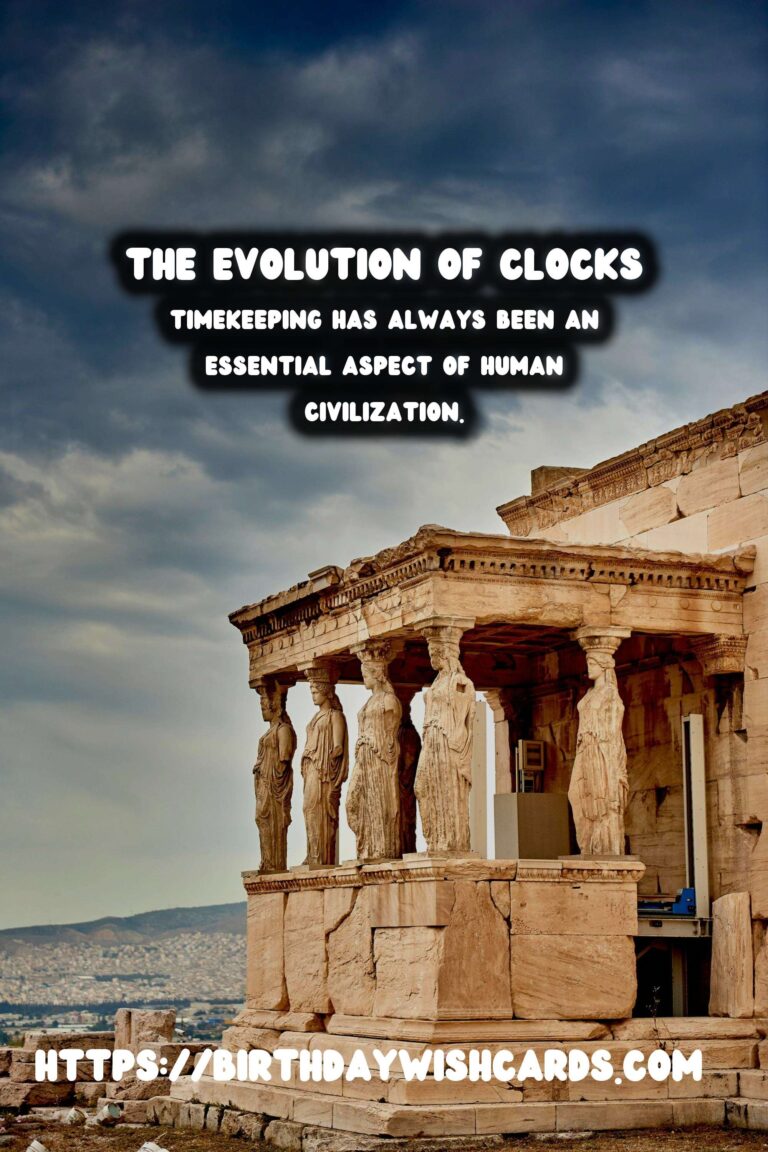
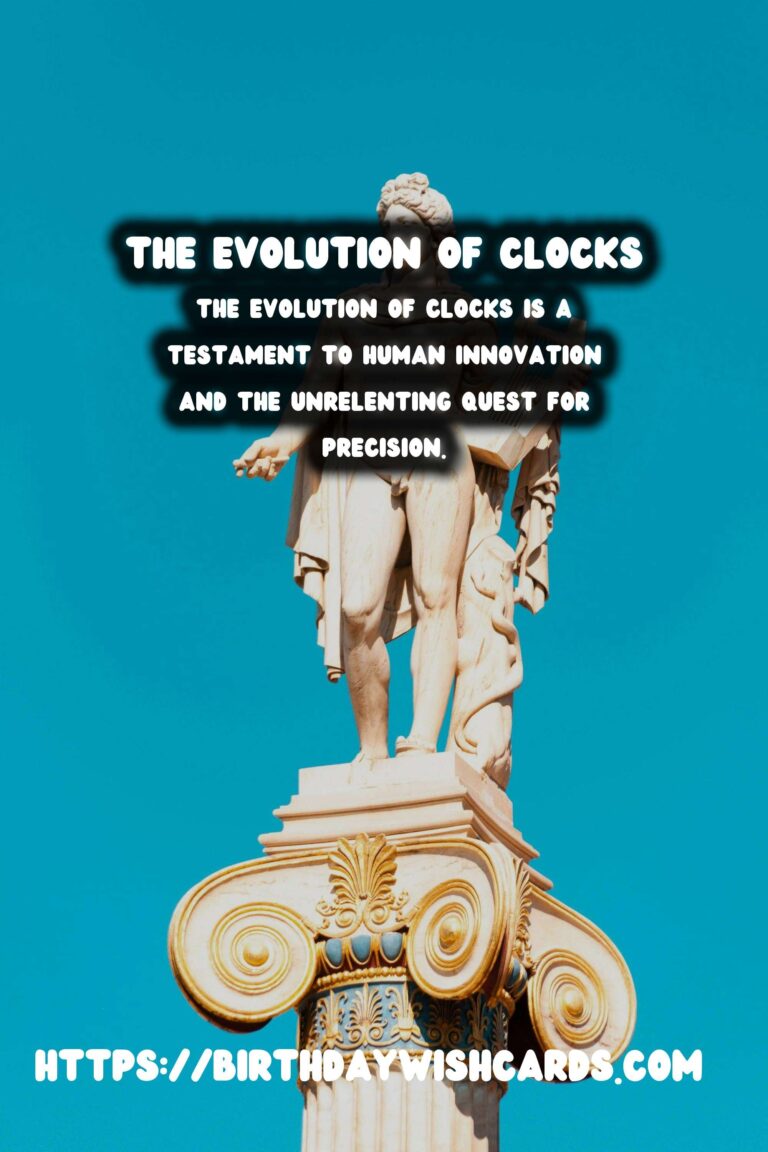
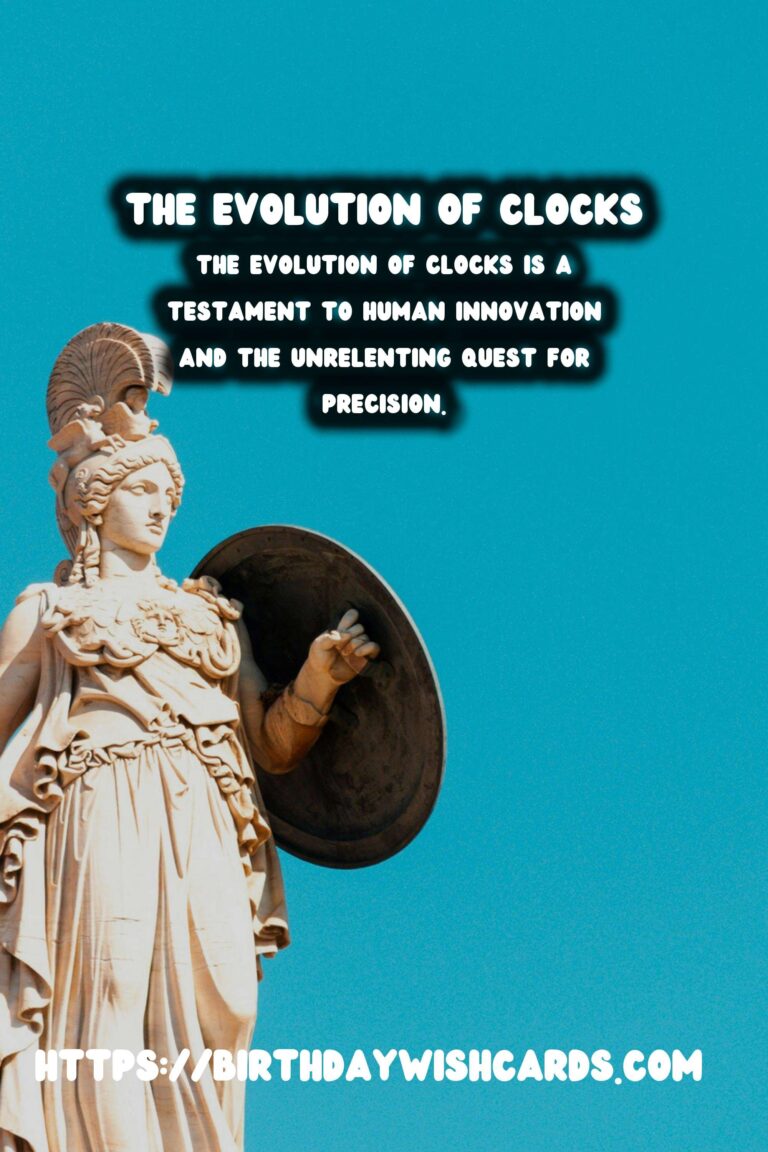
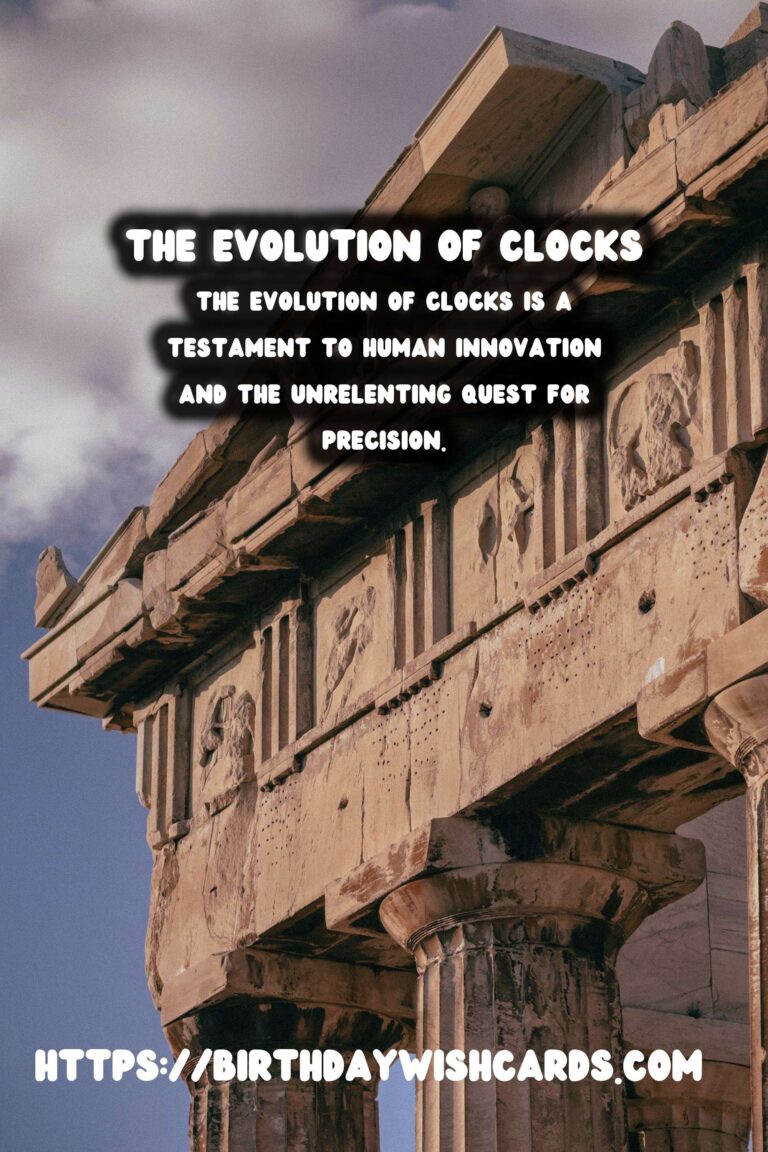



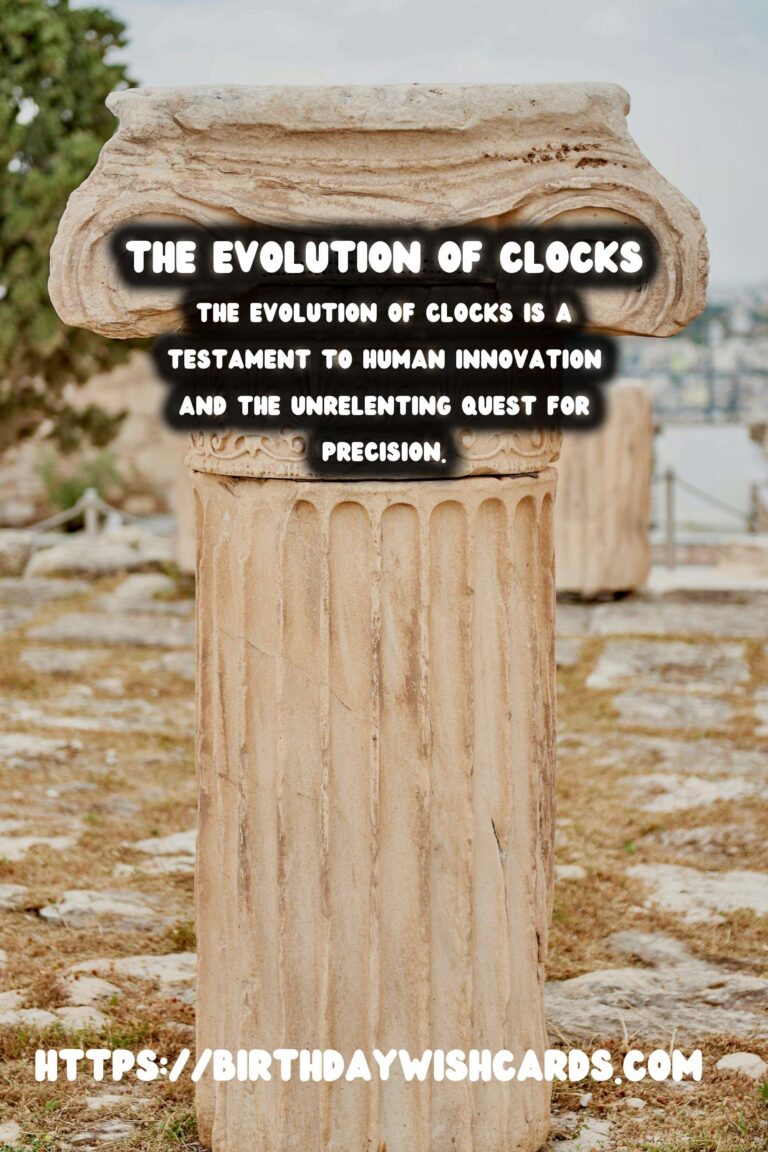
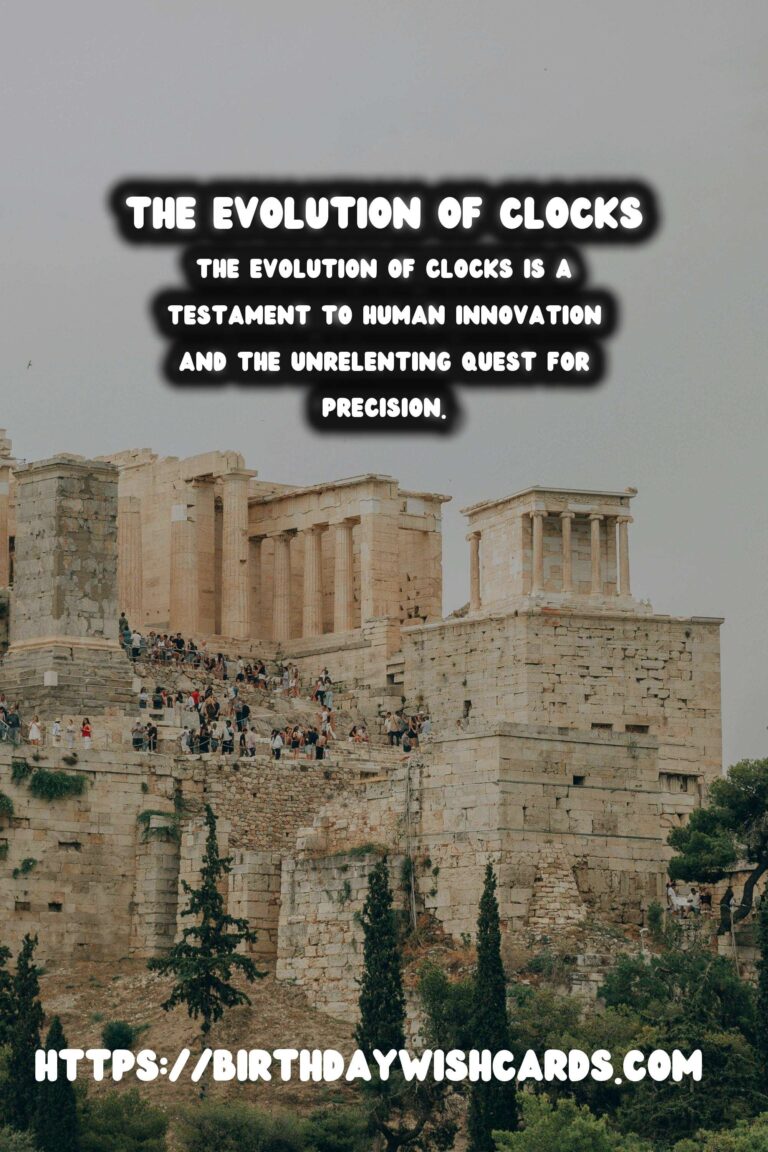
#HistoryOfClocks #TimekeepingEvolution




